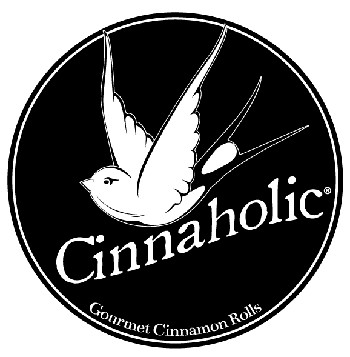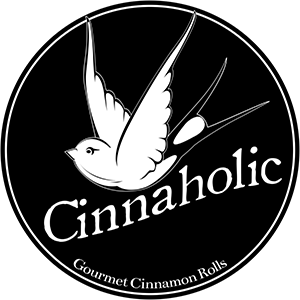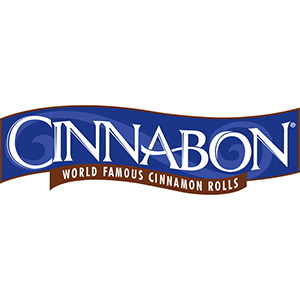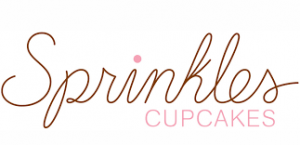Cinnaholic Franchise in 2025: Costs, Fee & FDD
Discover what it takes to invest in a Cinnaholic franchise, from startup costs to potential earnings. Explore the pros and cons of this plant-based dessert brand and see how it stacks up against competitors. Read more!
Table of Contents:
Cinnaholic is a unique and vibrant franchise that has taken the dessert industry by storm. Founded in 2010 by Shannon and Florian Radke in Berkeley, California, Cinnaholic quickly gained recognition for its innovative approach to the classic cinnamon roll. The founders’ vision was to create a gourmet, customizable cinnamon roll experience that caters to a wide range of dietary preferences, including vegan options. Their commitment to quality, creativity, and customer satisfaction has helped Cinnaholic carve out a significant niche in the competitive dessert franchise market.
At the heart of Cinnaholic’s menu is their signature cinnamon roll, which customers can customize with an array of frostings and toppings, allowing for endless combinations. This customizable experience appeals to a diverse customer base, from families looking for a fun treat to millennials seeking Instagram-worthy desserts. In addition to their core product, Cinnaholic offers an assortment of other baked goods like brownies, cookies, and edible cookie dough, all of which adhere to the same high standards of being 100% vegan. This positions Cinnaholic in a growing market of health-conscious and ethical consumers.
As of now, Cinnaholic has expanded significantly, with over 60 locations across the United States and Canada, demonstrating its wide appeal and successful franchising model. The brand continues to grow, driven by strong customer demand and positive reception in new markets. On a daily basis, Cinnaholic locations serve a steady stream of customers eager to enjoy a unique dessert experience, with many stores becoming popular spots for both casual visits and special occasions.
Cinnaholic offers robust support to its franchisees, ensuring they have the tools and knowledge needed to succeed within their own business model. This includes comprehensive training programs that cover everything from day-to-day operations to marketing strategies, empowering franchisees to effectively own their business. The franchise also provides ongoing support in areas such as product innovation, customer service, and operational efficiency, helping franchisees stay competitive and maintain the brand’s high standards. For potential franchisees, Cinnaholic’s established reputation, dedicated support system, and growing market presence make it an enticing opportunity in the food and dessert franchise sector.

Cinnaholic Franchise Insights
- Cinnaholic gained national attention after appearing on Shark Tank in 2014, which significantly boosted its brand visibility and led to rapid expansion, now with over 80 locations across the United States.
- The franchise is part of the booming plant-based market, with all products being 100% vegan, appealing to the growing number of health-conscious and ethically-minded consumers.
- The customizable nature of their products allows for over 20 frosting flavors and 20 topping choices, leading to millions of potential combinations and keeping customers returning for new experiences.
- Cinnaholic offers a relatively low-cost investment opportunity compared to other food & beverage franchises, with initial franchise fees around $40,000 and total initial investment ranging between $241,000 and $527,000.
Cinnaholic Franchise Key indicators
Unit Growth YOY (%)
24%
vs industry 1%
Total U.S. Franchised Units
80
3-Year Failure Rate
18%
vs industry 11%
Sales-to-Investment ratio
0.9:1
How much does it cost to open a Cinnaholic franchise?
Understanding the potential investment size and capital requirements is crucial when considering opening a Cinnaholic franchise. Cinnaholic franchise cost, including initial franchise fees, equipment costs, and ongoing operational expenses, impact the feasibility and profitability of the venture. Thoroughly evaluating these factors ensures that potential franchisees are prepared for the financial responsibilities and can make informed decisions about their ability to sustain and grow the business, ultimately contributing to long-term success.
Min & Max Investment
Opening a Cinnaholic franchise involves several key costs, which are outlined in Item 7 of the Franchise Disclosure Document (FDD). You can see a breakdown of the costs to open a Cinnaholic below from the most recent Item 7 below:
| Type of Expenditure | Minimum Investment | Maximum Investment |
|---|---|---|
| Initial Franchise Fee | $40,000 | $40,000 |
| Rent | $5,000 | $10,000 |
| Security Deposit | $3,000 | $10,000 |
| Project Management Fee | $1,795 | $1,795 |
| Real Estate and Improvements | $75,000 | $220,000 |
| Travel and Living Expenses while Training | $3,000 | $10,000 |
| Furnishings, Fixtures, Equipment, and Decorating | $75,000 | $150,000 |
| Signage | $3,000 | $7,500 |
| Opening Inventory | $3,000 | $5,000 |
| Computer Hardware/Software | $1,000 | $2,000 |
| Technology Fee | $750 | $750 |
| POS Service Fee | $537 | $537 |
| Grand Opening | $5,000 | $7,000 |
| Professional Fees | $4,000 | $15,000 |
| Insurance | $1,000 | $2,000 |
| Miscellaneous Opening Costs | $5,000 | $15,000 |
| Additional Funds – 3 months | $15,000 | $30,000 |
| Total Estimated Initial Investment | $241,082 | $526,582 |
Item 7 in the Franchise Disclosure Document (FDD) is the “Estimated Initial Investment” section. It outlines the total costs a franchisee can expect to incur when starting a franchise, including the initial franchise fee, equipment, inventory, real estate, and other startup expenses. This section is crucial because it provides potential franchisees with a detailed understanding of the financial commitment required, helping them assess affordability and plan their investment strategy effectively.
Required Capital
To open a Cinnaholic franchise, the required capital involves both the initial investment costs and financial requirements set by the franchise. Let’s take a closer look below:
- Initial Investment The total estimated initial investment for a Cinnaholic franchise typically ranges from $241,000 to $527,000. This includes the franchise fee, real estate, construction, equipment, initial inventory, and additional funds for initial operating expenses. Assuming that you will finance your franchise investment, you should plan to have 20% of the total investment amount in the form of equity (cash) for the investment.
- Liquid Assets Requirement Cinnaholic generally requires franchisees to have a minimum of $100,000 in liquid assets. This ensures the franchisee has sufficient funds to cover any unforeseen expenses and maintain financial stability during the startup phase.
- Net Worth Requirement While specific net worth requirements may vary, it is generally recommended that prospective Cinnaholic franchisees have a net worth of at least $250,000. This includes the value of assets such as real estate, investments, and personal property, minus any liabilities.
How much does a Cinnaholic franchise owner make?
Calculating the salary of a Cinnaholic franchise owner involves analyzing gross sales to determine total revenue, assessing operational efficiency to understand profit margins, and accounting for franchisor fees and additional expenses such as rent, utilities, and payroll. Effective management of these factors can significantly impact the profitability and financial success of a Cinnaholic franchise owner. This comprehensive financial analysis helps estimate net profits, from which the owner’s salary can be derived. A clear understanding of these factors ensures accurate salary projections and financial planning for sustainable business operations.
Cinnaholic Revenue & Gross Sales
Based on most recent analysis, Cinnaholic franchises have a median gross sales of $350,796. This performance metric is important to consider when evaluating the potential return on investment for a new franchise location. Additionally, many factors impact the gross sales, including location and operational expertise.
Which key factors impact the average revenue performance of Cinnaholic franchisees?
Recent performance of median gross sales could be attributed to several factors. Economic challenges, such as inflation and rising operating costs, may have impacted consumer spending on discretionary items like gourmet desserts. Additionally, increased competition in the dessert and plant-based markets might have drawn customers to other options. Changes in consumer behavior, possibly influenced by shifts in health trends or dietary preferences, could also play a role. Moreover, fluctuations in foot traffic due to local economic conditions or shifts in marketing strategies may have contributed to a recent dip in sales. Despite this, Cinnaholic’s strong brand and innovative product offerings continue to attract a loyal customer base.
Cinnaholic Franchise Operational Costs
Operational costs for a franchise like Cinnaholic are the ongoing expenses required to run the day-to-day operations of the business. These costs are essential for maintaining the business’s functionality and ensuring smooth operations. For a Cinnaholic franchise, operational costs include:
- Ingredients and Supply Costs The expenses incurred from purchasing high-quality, vegan-certified ingredients and supplies needed to prepare the customizable cinnamon rolls and other menu items. This includes everything from dough and toppings to packaging and cleaning supplies.
- Labor Costs Wages, salaries, and benefits for employees, including bakers, customer service staff, and managers, are crucial for daily operations and maintaining the brand’s service standards.
- Rent or Mortgage Payments The cost of leasing or owning the property where the bakery is located, which includes monthly rent or mortgage payments, as well as property taxes and insurance.
- Utilities Expenses for electricity, water, gas, internet, and other utilities necessary for running the bakery, particularly important for maintaining kitchen operations and creating a welcoming environment for customers.
- Maintenance and Repairs Costs associated with the upkeep of the kitchen equipment, baking ovens, and other fixtures, including routine maintenance and unexpected repairs to ensure smooth operations.
- Supplies and Inventory This includes everything from kitchen utensils and office supplies to uniforms and inventory management costs, ensuring that the bakery is well-stocked and operational.
- Marketing and Local Advertising Although separate from the national ad fund, local marketing and promotional efforts are necessary to drive foot traffic and increase visibility in your specific market.
- Insurance Costs for various insurance policies, including property insurance, liability insurance, and worker’s compensation insurance, are essential to protect the business from potential risks.
- Technology and Equipment Expenses for maintaining and upgrading point-of-sale systems, kitchen equipment, and other technological infrastructure to ensure efficient operations and a smooth customer experience.
- Miscellaneous Costs Other operational expenses such as licenses, permits, professional fees (e.g., legal and accounting services), and any other costs that arise from running the business.
Careful planning and budgeting for these operational costs are crucial for the financial health and success of your Cinnaholic franchise.
Cinnaholic Franchise Fees
When considering the operational costs of a Cinnaholic franchise, it’s important to also be aware of the ongoing fees that are required as part of your franchise agreement. These fees are essential for maintaining your franchise’s access to the brand’s support, advertising, and operational systems. Here’s a breakdown of the key ongoing fees you should be aware of:
- Royalty Fee 5% of Gross Sales, due every Tuesday for the preceding week’s Gross Sales. This fee is automatically debited from your bank account and covers the continued use of the Cinnaholic brand and operating systems.
- Advertising Fund Fee 2% of Gross Sales, due at the same time as the Royalty Fee. This fee contributes to national and regional marketing campaigns that benefit the entire franchise network.
- Advertising Cooperatives May not exceed 2% of Gross Sales, due at the same time as the Royalty Fee or as designated by your local cooperative. This fee supports localized marketing efforts coordinated by franchisees in specific regions.
- Local Advertising A minimum of 2% of Gross Sales, due as incurred. This fee is spent on local marketing initiatives tailored to your specific market to drive traffic and sales to your franchise.
There might be additional fees or costs depending on your specific franchise agreement or operational needs. It’s essential to carefully review your franchise agreement and consult with the franchisor to fully understand all the financial obligations involved.
Cinnaholic Franchise Earnings
Based on recent financial data for a Cinnaholic franchise, median gross sales were reported at $350,796. For an owner-operator, the estimated earnings after accounting for the aforementioned costs are $52,619, indicating an operating (EBITDA) margin of 15%. This suggests the franchise continues to offer potential for steady income.
For semi-absentee owners, earnings are slightly. This emphasizes the importance of active management and involvement in the franchise to maximize profitability, especially in a competitive market.
How to Open a Cinnaholic Franchise
Becoming a Cinnaholic franchisee is an exciting journey that involves thorough evaluation, training, and preparation. It offers the opportunity to own a business backed by a unique brand known for its innovative and customizable vegan desserts.
The full process for how to open a Cinnaholic franchise is outlined below:
- Initial Inquiry You or your franchise specialist submits an initial inquiry basic information about your interest and background. You should also conduct thorough research on the franchise, including seeing all of the information available on the Vetted Biz franchise intelligence platform, including access to the most recent Franchise Disclosure Document (FDD).
- Application If your initial inquiry is accepted, you’ll be invited to complete a more detailed application. This application will ask for comprehensive information about your personal and professional background, financial status, and reasons for wanting to become a franchisee.
- Discovery Day Successful applicants are invited to attend a Discovery Day, where you’ll meet the Cinnaholic team, tour a working franchise location, and gain deeper insights into the brand’s operations and culture. This day is crucial for both you and the franchisor to ensure there’s a good fit.
- Approval and Franchise Agreement After the Discovery Day, if both parties are aligned, you’ll receive approval to move forward. You’ll then sign the franchise agreement and pay the initial franchise fee, officially becoming a Cinnaholic franchisee.
- Site Selection and Build-Out With the help of Cinnaholic’s corporate team, you’ll select a suitable location for your bakery. They will assist in negotiating the lease, designing the layout, and managing the build-out process to ensure your store meets brand standards.
- Training Program Before opening your bakery, you’ll participate in a comprehensive training program covering all aspects of running a Cinnaholic franchise. This includes training on daily operations, marketing strategies, customer service, and product preparation.
- Pre-Opening Preparation During the build-out phase, you’ll continue preparing for the bakery’s launch. This includes hiring and training staff, setting up supply chains, and finalizing your local marketing plans.
- Soft Opening and Grand Opening Once construction is complete and your bakery is fully staffed and equipped, you’ll begin with a soft opening to test operations and make any necessary adjustments. This is followed by a grand opening, with support from Cinnaholic’s corporate team to ensure a successful launch.
- Ongoing Support After opening, you’ll receive ongoing support from Cinnaholic, including marketing assistance, operational guidance, and regular evaluations to ensure your bakery thrives within the brand’s standards.
Pros & Cons
Pros
Unique Product Offering: Cinnaholic’s customizable, vegan cinnamon rolls cater to the growing demand for plant-based and ethically sourced products, giving you a niche market with strong appeal.
Strong Brand Recognition: The brand has gained significant visibility, especially after appearing on Shark Tank, which can help attract customers and drive initial sales.
Lower Initial Investment: Compared to other food franchises, Cinnaholic offers a relatively low-cost entry point, making it accessible to a broader range of potential franchisees.
Scalable Model: With over 80 locations and counting, Cinnaholic has a proven, scalable model, which could offer growth opportunities as the brand continues to expand.
Cons
Niche Market: While the plant-based market is growing, it remains a niche. Depending on your location, this could limit the potential customer base, especially in areas less familiar with or less inclined toward vegan products.
Competition: The dessert and specialty bakery market is highly competitive, with numerous alternatives. Standing out may require extra marketing efforts and creative customer engagement.
Economic Sensitivity: As a discretionary product, gourmet desserts can be more vulnerable to economic downturns, which could impact sales during tough financial times.
Market Saturation: In some regions, the rapid expansion of similar dessert franchises could lead to market saturation, potentially limiting growth in certain areas.



